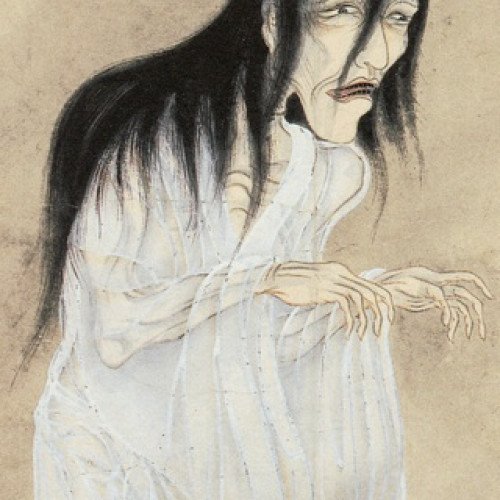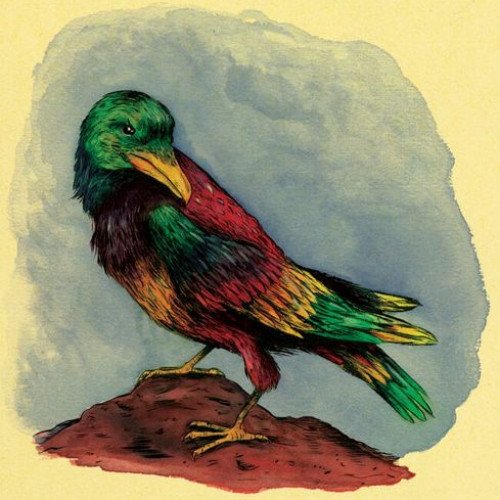Ghost VS Rainbow crow

Ghost
In folklore, a ghost is the soul or spirit of a dead person or animal that can appear to the living. In ghostlore, descriptions of ghosts vary widely from an invisible presence to translucent or barely visible wispy shapes, to realistic, lifelike forms. The deliberate attempt to contact the spirit of a deceased person is known as necromancy, or in spiritism as a séance. Other terms associated with it are apparition, haunt, phantom, poltergeist, shade, specter or spectre, spirit, spook, and wraith. The belief in the existence of an afterlife, as well as manifestations of the spirits of the dead, is widespread, dating back to animism or ancestor worship in pre-literate cultures. Certain religious practices—funeral rites, exorcisms, and some practices of spiritualism and ritual magic—are specifically designed to rest the spirits of the dead. Ghosts are generally described as solitary, human-like essences, though stories of ghostly armies and the ghosts of animals rather than humans have also been recounted. They are believed to haunt particular locations, objects, or people they were associated with in life. According to a 2009 study by the Pew Research Center, 18% of Americans say they have seen a ghost.The overwhelming consensus of science is that there is no proof that ghosts exist. Their existence is impossible to falsify, and ghost hunting has been classified as pseudoscience. Despite centuries of investigation, there is no scientific evidence that any location is inhabited by spirits of the dead. Historically, certain toxic and psychoactive plants (such as datura and hyoscyamus niger), whose use has long been associated with necromancy and the underworld, have been shown to contain anticholinergic compounds that are pharmacologically linked to dementia (specifically DLB) as well as histological patterns of neurodegeneration. Recent research has indicated that ghost sightings may be related to degenerative brain diseases such as Alzheimer's disease. Common prescription medication and over-the-counter drugs (such as sleep aids) may also, in rare instances, cause ghost-like hallucinations, particularly zolpidem and diphenhydramine. Older reports linked carbon monoxide poisoning to ghost-like hallucinations.In folklore studies, ghosts fall within the motif index designation E200-E599 ("Ghosts and other revenants").
Statistics for this Xoptio

Rainbow crow
The story of the Rainbow Crow is a Lenape legend, symbolizing the value of selflessness and service. After a long period of cold weather, the animals of the community become worried. They decide to send a messenger to the Great Sky Spirit to ask for relief. The Rainbow Crow, the most beautifully feathered bird, offers to make the arduous journey. He travels safely, and is rewarded by the Great Spirit with the gift of fire. He carries the gift in his beak back to his people, but upon his return, he does not appear to be the same bird that he once was. The fire has scorched his plumage black, with only hints of his previous color, and his voice has been made rough and hoarse by the smoke. In this way, his sacrifice is commemorated. Another name for Rainbow Crow is Many Colored Crow. This is in reference to the iridescent feathers created from the fire that scorched his plumage black, with only hints of his previous color that reflect when sun light strikes them. This legend is the basis of the American animated short film Crow: The Legend.